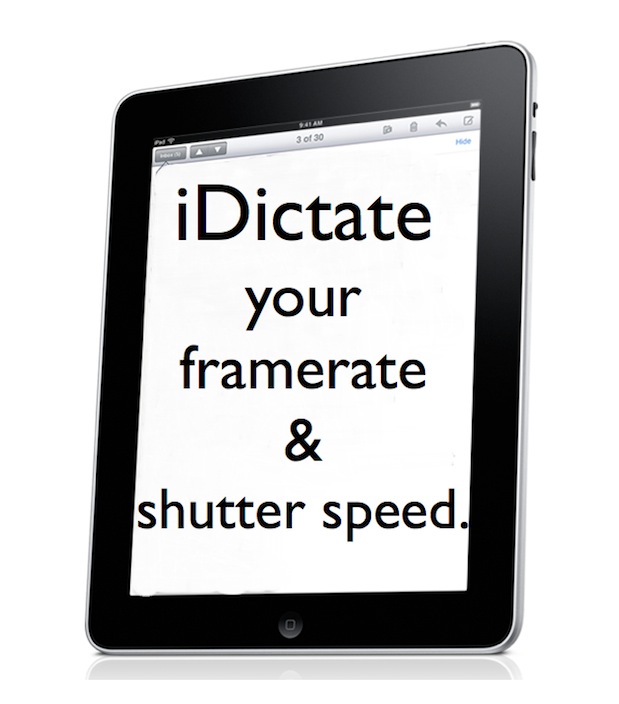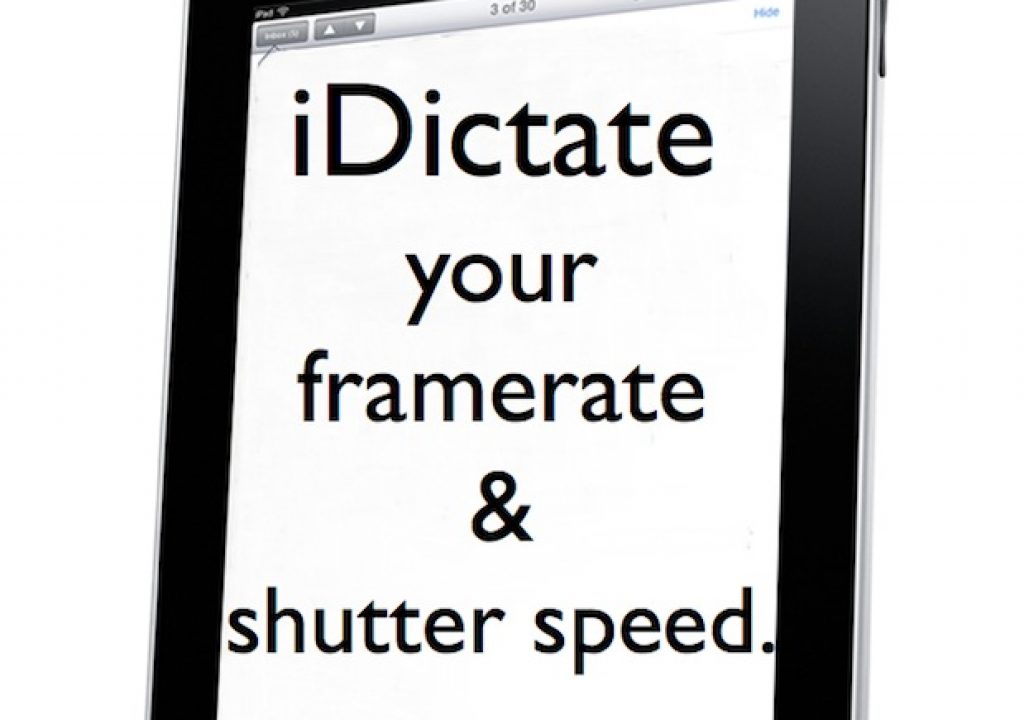
Back in 2008, I published an article called AppleTV, WDTV, or Blu-ray: Which one is best to distribute your HD project? In the few weeks that have passed since Apple’s launch of the iPad, it has become clear that the iPad will likely be a much more popular content consumption device than any of the other three. In that 2008 article, I explained that the highest HD resolution compatible with the AppleTV was 720p25, despite misinformation on Apple’s own multinational websites, which underrated it at 720p24 (and continue to do so). Fortunately, the iPad beats that, with a maximum published supported framerate of 30. This article is about how the iPad will now dictate your shooting framerate & shutter speed, especially if you want to have a consistent look on all possible outputs, including broadcast TV, the web, and the iPad.
Of course, if you were already shooting (for esthetic reasons) in 23.976p, 25p, or 29.97p, you have nothing to change. However, if you were shooting your standard scenes (not your slow motion scenes) at 50p or 59.94p, you will likely want to re-think that if you expect a good percentage of your potential viewers to be using an iPad, and you want a consistent look on all devices.
Can’t I shoot 720p59.94p and then reduce that to 720p29.97p for the iPad?
Some of you might ask: “Can’t I shoot 720p59.94 and then reduce that to 720p29.97 for the iPad?” The answer is: Yes you can, but the “standard” shutter speed setting for 59.94p is not the same as the “standard” shutter speed setting for 29.97p. If you want all of your audience to see a consistent look (despite the output venue), you should shoot at a consistent framerate/shutter speed for all of your outputs. If that happens to be 29.97p with a 1/60 shutter speed, it will look the same on iPad, on Blu-ray, or on broadcast HDTV, even though on Blu-ray it will be internally double-framed (although likely at a much higher bit rate than in the camera).
50p producers might ask: “Can’t I shoot 720p50 and then reduce that to 720p25 for the iPad?” The answer is: Yes you can, but the “standard” shutter speed setting for 50p is not the same as the “standard” shutter speed setting for 25p. If you want all of your audience to see a consistent look (despite the output venue), you should shoot at a consistent framerate/shutter speed for all of your outputs. If that happens to be 25p with a 1/50 shutter speed, it will look the same on iPad, on Blu-ray, or on broadcast HDTV, even though on Blu-ray it will be internally double-framed (although likely at a much higher bit rate than in the camera).
Shouldn’t the iPad be able to playback up to 59.94p?
It would be nice if the iPad were able to playback put to 59.94p or greater. it would also be nice if broadcast HDTV were able to transmit up to 1080p59.94 or greater. In the meantime, if we want to have a consistent look on all popular venues, we need to make it work consistently with all of them, and that means conforming to the least common denominator.
Panasonic’s AVCCAM incomplete native progressive recording modes
Read the related article: Panasonic’s AVCCAM incomplete native progressive recording modes.
Allan T©pper’s articles, seminars, and audio programs
Get a full index of Allan T©pper’s articles and upcoming seminars and webinars at AllanTepper.com. Listen to his radio program TecnoTur, which is now available both in Castilian and in English, free of charge. Search for TecnoTur in iTunes or visit TecnoTur.us for more information.
Disclosure, to comply with the FTC’s rules
None of the manufacturers listed in this article is paying Allan T©pper or TecnoTur LLC specifically to write this article. Some of the manufacturers listed above have contracted T©pper and/or TecnoTur LLC to carry out consulting and/or translations/localizations/transcreations. At the date of the publication of this article, none of the manufacturers listed above are sponsors of the TecnoTur programs, although they are welcome to do so, and some are already sponsors of ProVideo Coalition magazine.


